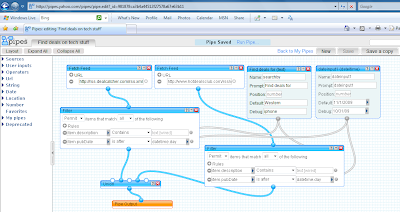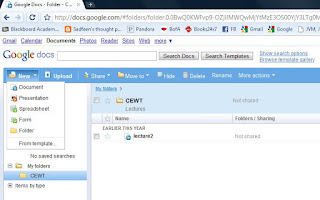• Email wave: general email functionality, add people to the wave, send private messages to some participants, replay the wave as it builds for people who got added on later.
• Chatting and Video: chat with contacts using real time character by character streaming with the ability to turn off character by character streaming.
• Photos: Upload, edit and share photos with contacts in real time. Contacts that are online can make edits or comments as you type them in or vice versa. Drag and drop items right from your desktop to wave for sharing.
• Polls: take opinions of contacts using polls with ability to view results in different formats, share them on your blogs etc.
• Ideas, suggested itinerary, menu and RSVPs can all be stored in a single location for sharing online and real time. Google Maps integration as a gadget amongst weather and others can also be incorporate to your events etc.
• Google Voice?
• Gadgets:
o Facebook, twitter integration so a wave user can perform actions in the social networking sites from wave app.
• Documents: edit and share your documents with wave contacts. Real time editing features makes collaboration easier for teams. Replay option allows for showing the life of the document as it evolves into a final draft.
• Meetings: record meeting notes real time for instant feedback and documentation. Collaborate by sharing machine controls. The playback feature helps members to follow along if they joined late or are viewing the minutes at a later time.
• Brainstorming Ideas: Great place to discuss and fine tune ideas along with ability to add rich content to the wave.
• Interactive games: Play online games with your contacts by adding your favorite game as a gadget on the wave.
Observations:
Google wave is an application running in a cloud out on the internet; using a browser a user can interact with the application. The wave is geared towards being used as a desktop application which is in fact a web based application. The demo presents Google wave being used over Chrome, Google’s internet browser, where the look and feel is that of a desktop application, appears to work well with the wave. If you are out of internet, you are out of all the apps you use in the wave along with all the data; hence the cloud application. The fact that Google Wave is web based, it is platform independent; A great interoperability win by design. No matter if you are on Windows, Mac or Linux, your Google wave app works and behaves the same. Furthermore, since Google Wave is written using GWT (Google Web Tools Kit) it’s automatically cross browser compatible. Versioning and updating software becomes easier as the cloud is the only item which needs to be redeployed.
Expectations:
Currently, there are many different applications which the corporate world employs to communicate amongst each other. Means of communication like chatting, document sharing, email, video conferencing, WebEx, live meeting, Gforge or Google forums are just a few applications by which we communicate in the enterprise arena. Merging the functionality into one application with added features explained above, Google Wave appears to have understood the value of increased productivity by providing such a rich application with everything right here and now. The benefits unfortunately are hard to explain to a novice user due to the fact that some of what Google Wave offers is already available in different shapes and forms. The ability of companies to set up their own servers for the cloud is a very good indicator on Google’s part that they are serious about having market shares of productivity tools historically owned by Microsoft.
I think we will see more and more integration of other online collaborating tools into Google Wave in the form of gadgets, which will help users to gradually migrate to using Google Wave tools.
Personal use may also thrive based on the easier communication ability provided by the Wave, it’s fun to use!
I also expect Google Wave to appear on IPhones and other devices soon.
Security of information a consumer shares in the cloud application might be a reason for concern for many. Google must come up with a creative and compelling argument for users who could get on the Wave but won’t due to security concerns.
Impressive applications: Gravity is an extension in google wave implemented by SAP. Basically, it's a modeling app.
 Assists diseparate teams of individual to come together to discuss, plan and write a business or process model while collaborating online, realtime using google wave.
Assists diseparate teams of individual to come together to discuss, plan and write a business or process model while collaborating online, realtime using google wave.Here it from the pros:




